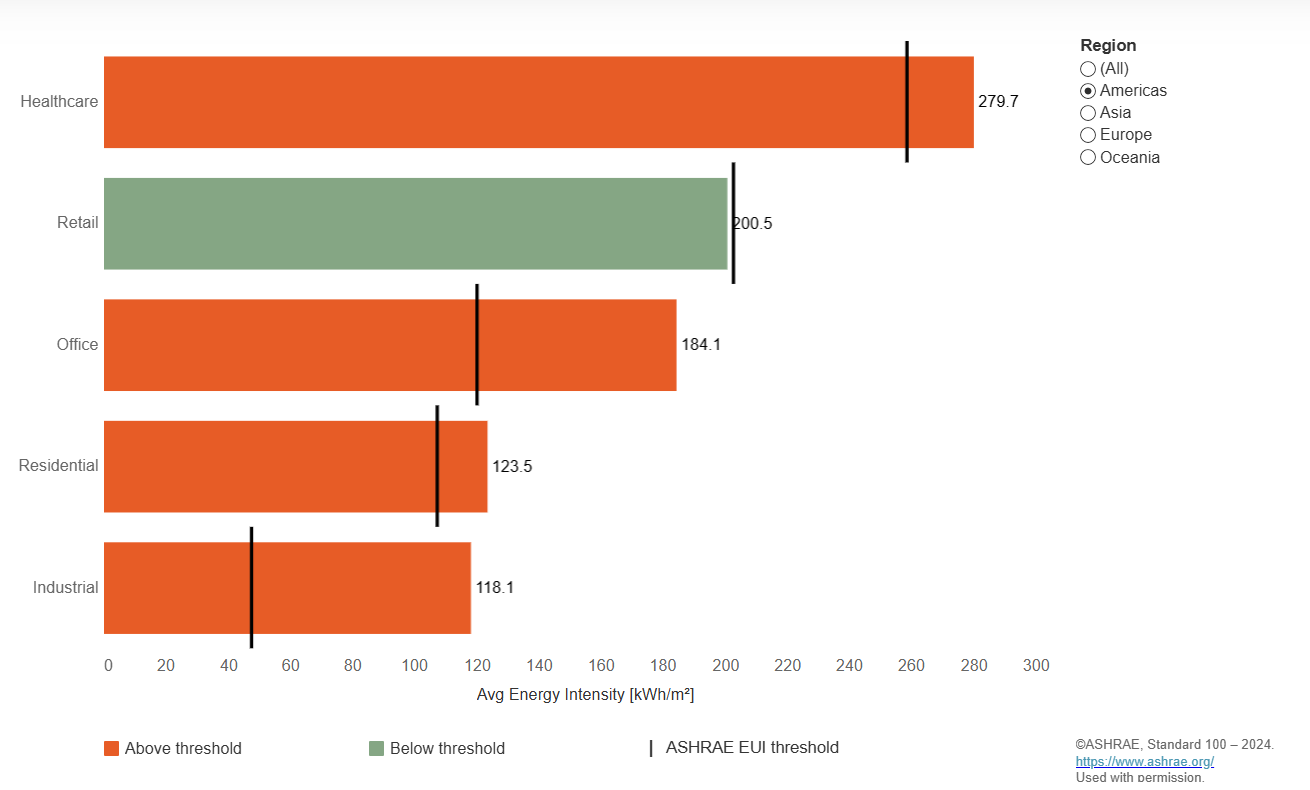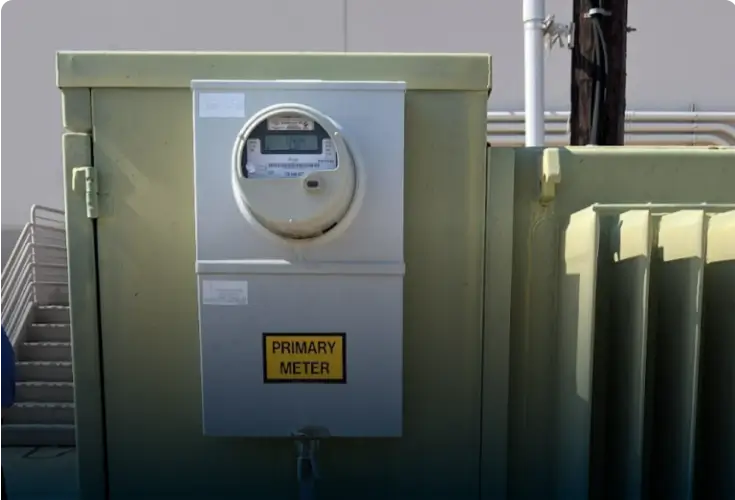GRESB numbers are in, and they paint a pretty damning picture for industrial real estate.
After a significant jump in energy data coverage for industrial & logistics properties from 39% in 2023 to 52% in 2024, this year’s results show a clear stall: coverage reached only 56%.

And the problem isn’t just coverage.
GRESB evaluates energy efficiency by comparing building performance against ASHRAE benchmarks. If a property performs better than that baseline, it’s considered “efficient.”
That might make sense for properties where landlords control the operations, but that’s not the case.
In this flawed system, it’s no surprise that Industrial also landed at the end of the ranking, with the lowest share of energy efficient buildings.

Meanwhile, sustainability and asset management teams are banging their heads against the wall, still losing a lot of time chasing and cleaning data and spending money with consultants tied up in low-value tasks, only to see little to no real progress.
The Illusion of Progress
Industrial portfolios have always been among the hardest to tackle.
In 2023 and 2024, most owners focused on the easy wins: cooperative tenants and utilities that make it easy to get data. But now the wall has hit and it’s getting harder to make progress beyond that baseline.
Friction with tenants, reluctance to share data and limited staff capacity all compound the challenge.
That’s why, for most teams, tenant-controlled utility data is still a black box.
Huge amounts of time and attention go into compliance, with teams stuck in a spreadsheet nightmare and an endless loop of chasing bills.
Even in jurisdictions where utilities provide the data, getting tenants to sign LOAs and managing them is no walk in the park.
To make matters worse, many are spending budgets on consultants just to handle basic data entry. Instead of building a long-term data infrastructure, they end up rebuilding the same broken process every season.
Even with good technologies on the market to help, the sector is moving at a glacial pace. Many owners have piloted promising solutions, but few have left this initial point.
And here’s the paradox: 65% of industrial participants say they have a net zero policy, yet most are still stuck on coverage and benchmarking. If you don’t understand how your properties are performing, there’s no way to prioritize action, and no path toward your net zero targets.
And that’s why many teams are watching their carbon deadlines get closer with little to no progress to show for it.
Beyond GRESB
The main reason most teams chase utility data in triple net leases is to increase their GRESB ratings. And that's fair, data coverage represents the single biggest pool of available points, and increasing it could bump a portfolio from three to five stars.
But in that world alone, there’s no upside. When data collection is treated as the end goal, it’s purely a cost center and not a value driver.
You need to show serious results and benefits and it can't be in the form of GRESB numbers. It has to be actual results.
Even GRESB is no longer just about data coverage; it’s about what you do with that data and how you get things done.
The same shift is happening in policy and finance: investors, lenders, and regulators are moving away from “checkbox sustainability” toward measurable performance.
Benchmarking is just the first step. With accurate and complete data, it’s possible to define your priority assets and take action at the property level to improve NOI.
Whether it’s lowering total cost of occupancy to lease faster, gaining leverage in renewals, or making high-caliber tenants seek you out in the market, turning data into performance can be a competitive edge.
It’s also easier to get your buildings certified and model decarb pathways that align with your portfolio’s carbon targets and timelines.
GRESB may have started as a framework for transparency, but its evolution mirrors the market’s. The next phase of sustainability isn’t about filling in data, it’s about performance and tying it to real results.
Another variable to pay attention to: Timing
GRESB is a relative benchmark. The numbers we’re looking at now reflect 2024 data.
Although they show a clear stall, we have to consider that by the time next year’s scores are released, the game may already have shifted completely.
Many of your peers spent 2024 testing utility data collection strategies, selecting vendors, and getting their portfolios ready to scale. This year (2025) is when those rollouts are happening at scale. But the results of that work won’t appear in GRESB until 2026.
If you’re only starting now, the earliest you’ll see portfolio-level results in GRESB is 2027, even 2028 if things slip.
That puts you at least one year behind. If you’re serious about catching up or staying ahead, you better get started.
What’s Ahead
GRESB is evolving fast.
The focus is shifting from data coverage to performance. Local regulations are following the same path.
And tenants are increasingly looking at total cost of occupancy, not just rent — and that’s turning energy performance into a key factor in site selection.
On top of that, 65% of future leasing demand will come from occupiers with carbon reduction goals. That translates to more than 553 million square feet of industrial space needing to support decarbonization targets.
Industrial portfolios stuck in manual data collection and endless back-and-forth for bills and LOAs won’t keep up.
If we want to make progress on what actually matters, we have to get past the phase of chasing data.
Those building a solid data foundation today will be ready to optimize, decarbonize, and thrive in a market where sustainability is no longer a differentiator.
CASE STUDY
Top 10 Global Asset Management Firm deploys Enertiv to get 100% utility data coverage across 100+ industrial sites
Light at the end of the tunnel
If you’ve made it this far, you’ve likely realized that implementing a utility data collection system in-house involves much more than installing meters and connecting APIs.
Yes, it’s possible to build it from scratch.
But it takes time, resources, and a learning curve that’s hard to fully anticipate.
Unless this is your core business, you’ll likely spend years learning lessons we’ve already paid for — through failed installs, messy integrations, and countless conversations with teams with real-world demands.
What may seem like a straightforward checklist today was, for us, a long path marked by challenges and meaningful breakthroughs.
Today’s sustainability leadership depends on speed and data precision. If you’re serious about hitting decarbonization targets, every delay in collecting accurate utility data is a missed opportunity.
That’s why going through this entire build process internally can actively slow your energy transition.
You don’t need to start from zero to reach net zero. You just need to avoid the mistakes that stall everyone else.




%20consider.webp)

